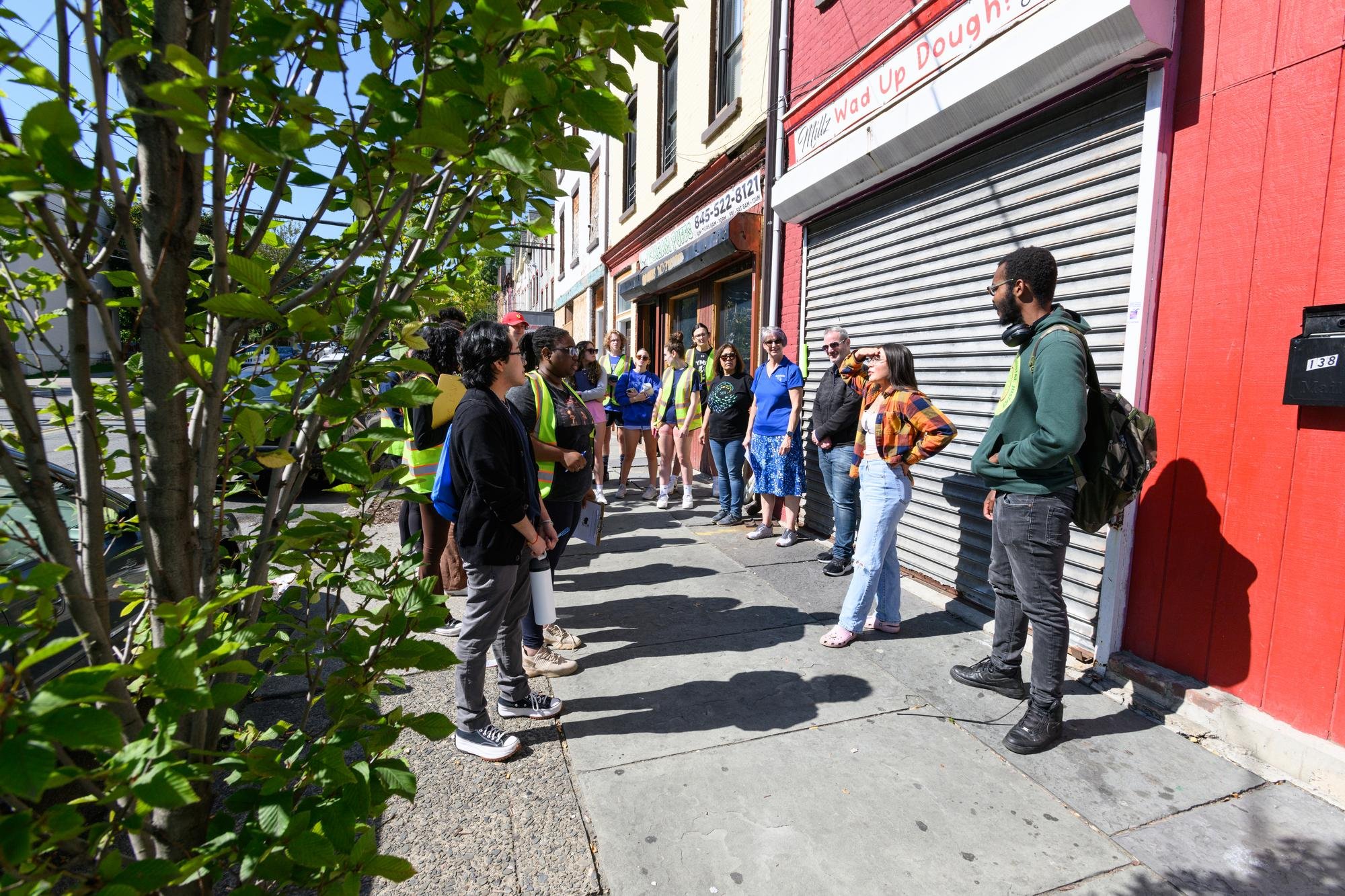Getting back to nature
The Fall 2023 semester saw Mount students teaming up with local organizations, rolling up their sleeves, and aiding the community in some very hands-on environmental projects.
A tree grows in Newburgh
Photo by Lee Ferris
Mount Saint Mary College First Year Experience students and Bishop Dunn second graders planted a tree together on campus during the Fall 2023 semester.
A new red oak tree stands outside of Bishop Dunn Memorial School, thanks to principal Nancy Benfer’s second grade class and a team of freshmen and faculty from the Mount’s First-Year Experience (FYE) program.
The tree was planted in the same area where another had once stood years ago; a tree that Benfer and Mike Daven, longtime professor of Mathematics and an FYE faculty member, have fond memories of.
“[Now] a new red oak tree stands, symbolizing not only the growth of nature, but also the continual growth of our students and community,” explained Benfer, a 2004 graduate of the Mount.
In addition to Daven, the Mount faculty and staff who made the event possible were Michael McGuire, assistant professor of History and Political Science; Erin Weeks, former academic coach/advisor; and Denise Garofalo, librarian for Systems and Catalog Services.
Fr. Greg Fluet, Interim President of the Mount, began the ceremony with a prayer and expressed his admiration for the enthusiasm exhibited by the young students of Bishop Dunn.
All of the second graders – and a few Mount freshmen – helped to shovel and rake the soil around the new tree. The second graders then took field notes and drew pictures, capturing their perspectives and memories of the event. The college’s facilities team also helped with the planting.
A plaque nearby the tree reads, “From the Second Grade Class of Bishop Dunn Memorial School and Mount FYE Learning Community 9, Fall 2023. Watch Us Grow!”
It will be around 2037 when the second graders of Bishop Dunn graduate from college. Should they attend the Mount, noted Benfer, they can visit their oak tree and take photos with their family.
Studying the Hudson with San Miguel




Photos by Lee Ferris
Mount Biology students put on their waders and worked alongside students from Newburgh’s San Miguel Academy to research the Hudson River.
Mount students – hailing from the classes of associate Biology professors Suparna Bhalla and Elizabeth Harper – demonstrated experiments like identifying fish species from net samples, checking the oxygen percentage of the water, measuring the wind speed, and sampling the soil from the Hudson River.
The event was part of Hudson River Snapshot Day, an annual event that celebrates the Hudson River Estuary while educating participants from middle school through college. Part of National Estuaries Week, the event is coordinated by The Hudson River Estuary Program of New York State Department of Environmental Conservation and Lamont-Doherty Earth Observatory.
Video clips from Hudson Valley Snapshot Day.
Tree research in the city



Photos by Lee Ferris
Throughout the fall semester, first-year students in the Natural Sciences assisted the Greater Newburgh Parks Conservancy’s (GNPC) tree planting initiative through a tree identification project.
Spearheaded by Bhalla and Lynn Maelia, professor of Chemistry and Chair of the Division of Natural Sciences, the project has been woven into their FYE learning community, and continues the research that students began last year.
The project provides data for the GNPC’s tree planting initiative.
“We wanted to use trees as our FYE theme to get students to think about trees in ways they never did before: the advantages, the biodiversity, the importance for the ecosystem, and the environmental justice associated with trees,” explained Maelia.
One group of students went to sites along Chambers Street and Grand Street where the Parks Conservancy was planning to plant some trees. They collected soil samples, and brought them back to the lab for testing, a process they had previously learned in class. Another group assessed the existing trees, identifying the species, measuring the circumference, estimating the height, and measuring the proximity to various objects. Through this information, they assessed whether the existing trees were appropriately placed.
The students also assessed locations on street lawns where new trees could be planted, measuring the spaces and proximity to existing corners, signs, and utilities. They went on to make recommendations for what trees should be planted, taking the size of the tree and the desire for biodiversity into consideration.
Students in both courses have entered the data into a spreadsheet, which will be shared with the GNPC to assist in their efforts to plant trees for future generations and caring for the trees already planted.
